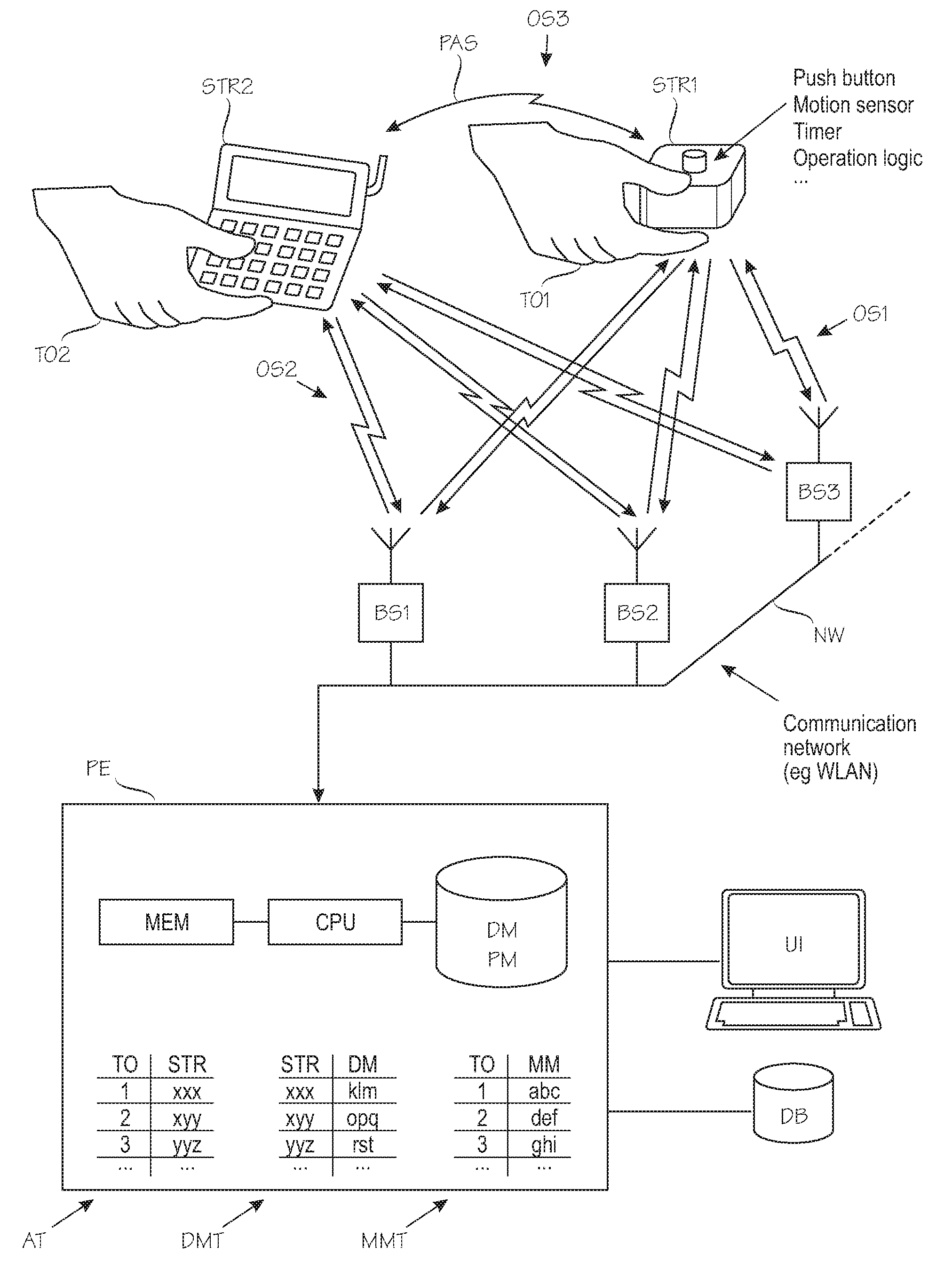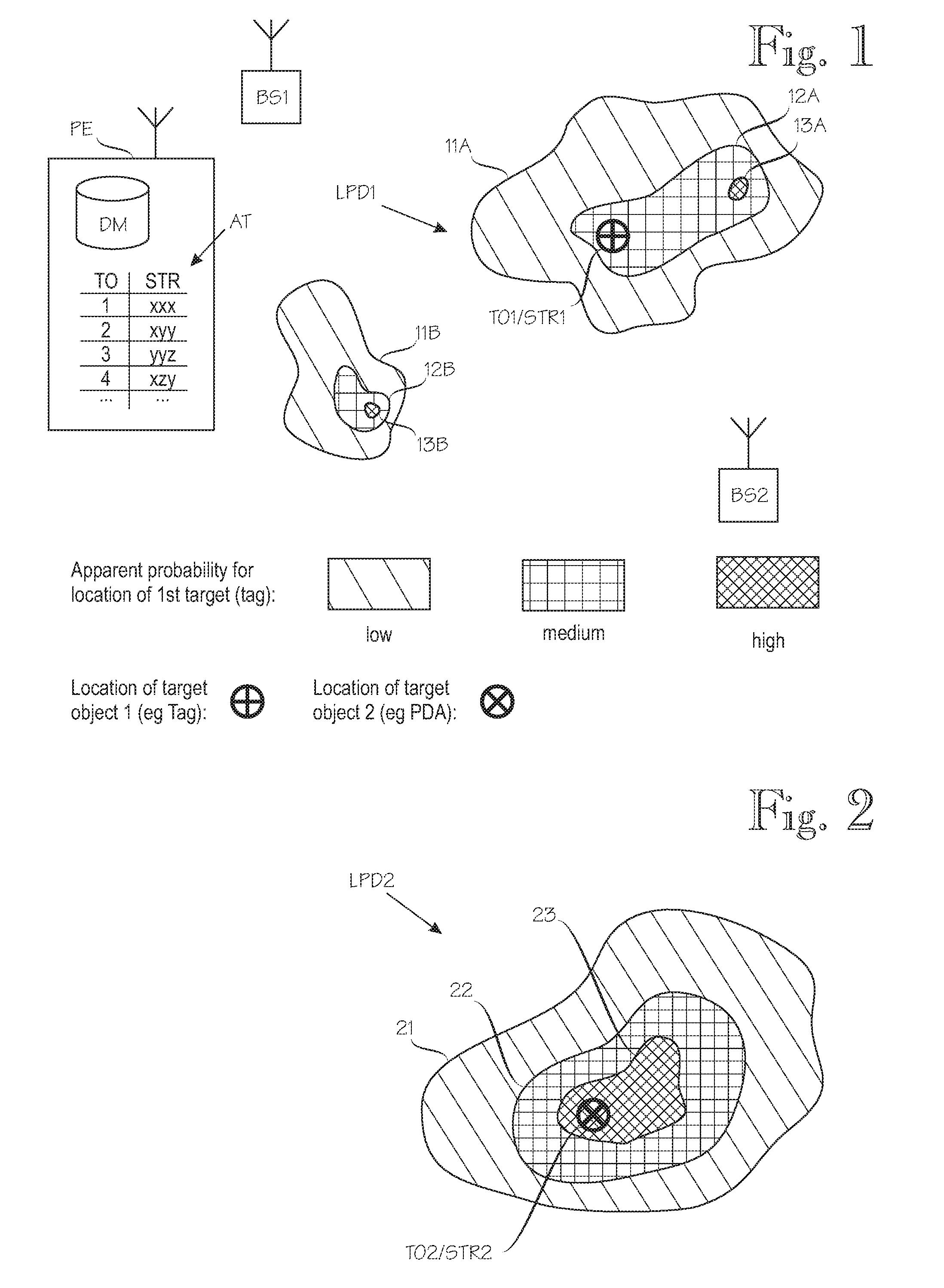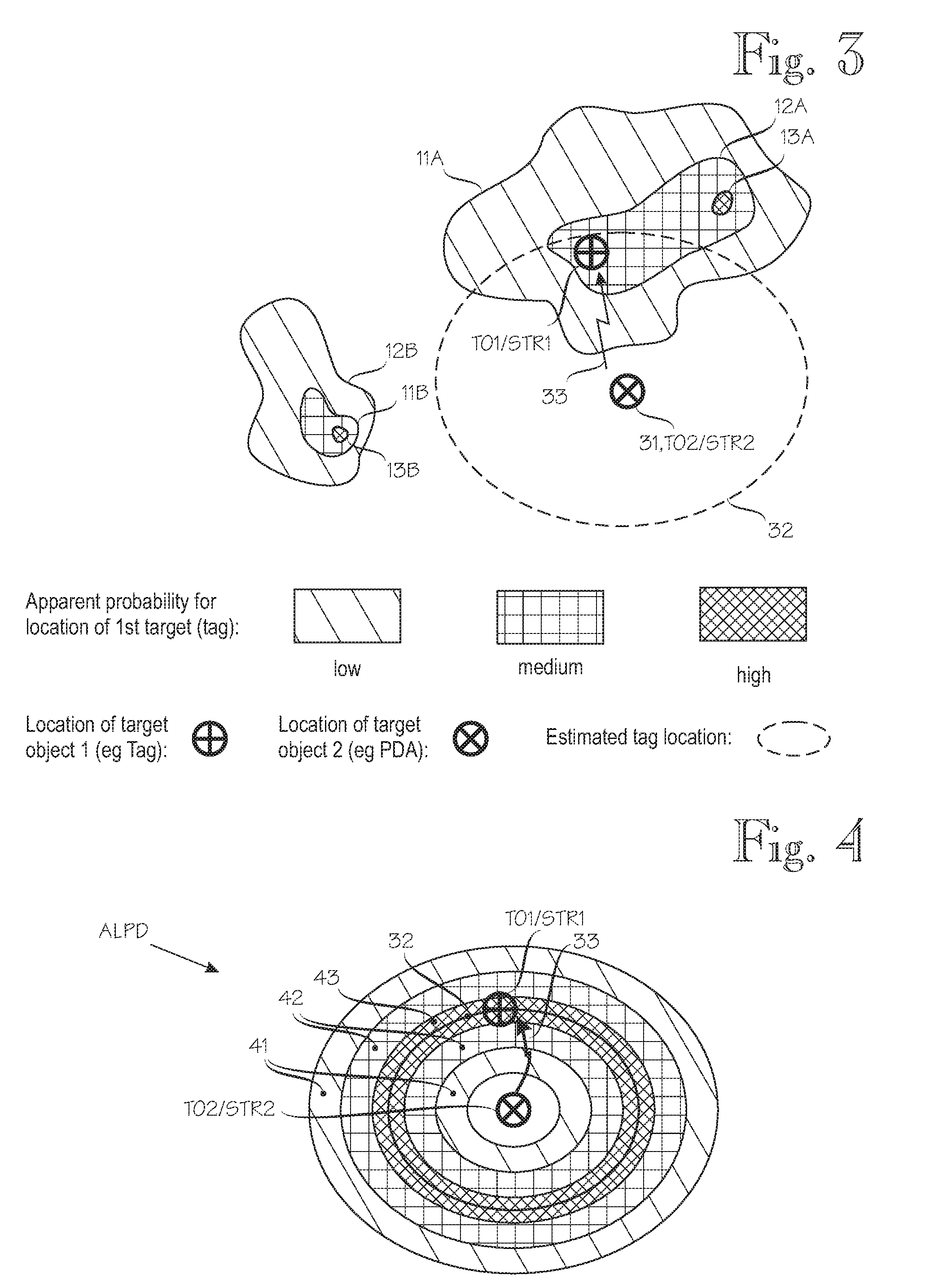Positioning of mobile objects based on mutually transmitted signals
- Summary
- Abstract
- Description
- Claims
- Application Information
AI Technical Summary
Benefits of technology
Problems solved by technology
Method used
Image
Examples
Embodiment Construction
[0060]FIGS. 1 through 5 demonstrate the operating principle of the invention by means of gradually progressing schematic illustrations. In order to provide a concrete application example, FIGS. 1 through 5 are based on the assumption that the first target object is a low-cost tag which suffers from the positioning problems described in the background section of this patent specification, while the second target object is a palmtop computer or personal digital assistant (“PDA”) having more extensive signal measurement capabilities. For example, a typical PDA's battery is bigger and charged more frequently than a tag's battery, the PDA has more processing power and since it has other uses apart from positioning, it can be provided with more advanced signal processing circuitry. However, the inventive principle can be used to enhance positioning of a first target object by means of observations of a second target object even if the two target objects are equally capable, and the assump...
PUM
 Login to View More
Login to View More Abstract
Description
Claims
Application Information
 Login to View More
Login to View More - R&D
- Intellectual Property
- Life Sciences
- Materials
- Tech Scout
- Unparalleled Data Quality
- Higher Quality Content
- 60% Fewer Hallucinations
Browse by: Latest US Patents, China's latest patents, Technical Efficacy Thesaurus, Application Domain, Technology Topic, Popular Technical Reports.
© 2025 PatSnap. All rights reserved.Legal|Privacy policy|Modern Slavery Act Transparency Statement|Sitemap|About US| Contact US: help@patsnap.com



